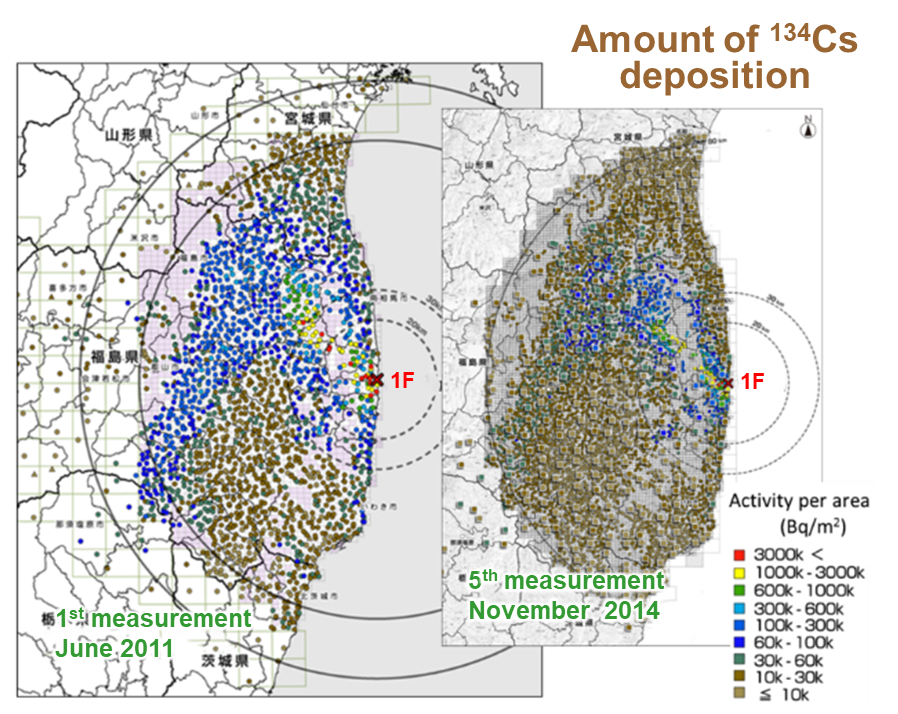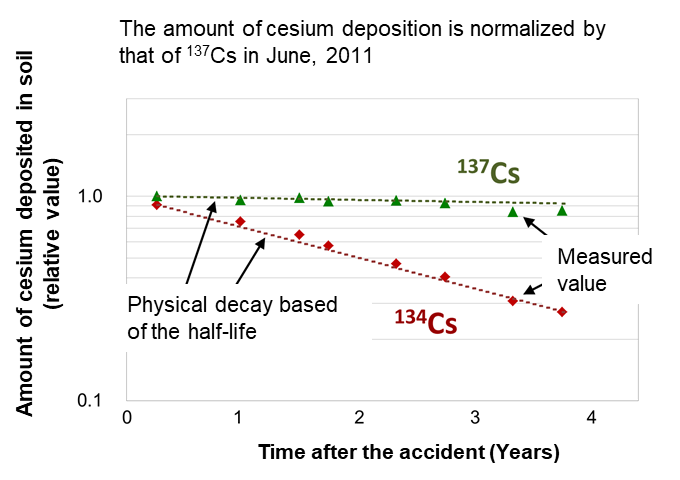Radioactivity and Air Dose Rate
(2015)
QHow has the distribution of radioactive material changed over time?
A
The amount of cesium (Bq/m2) deposited in flat locations where little soil disturbance occurs has decreased almost according to the half-life of the nuclide. The amount of horizontal migration of cesium is small in uncultivated places without flooding.
On the other hand, the decrease in radiocesium inventory is thought to be slightly faster than the physical decay on the slopes in farmland, grassland, forest and a catchment comprising diverse land uses.
Major part (more than 80%) of radiocesium deposited on pavements and roofs are thought to be washed off at the time of initial deposition and by the following precipitation during four years after the accident.

Fig.1 Distribution of 137Cs deposited in soil at two different periods

Fig.2 Time-dependence of averaged amount of cesium deposition
- It was confirmed that the amount of 134Cs and 137Cs deposited in soil has decreased almost based on the half-life of the nuclides.
- Analysis of cesium deposition and field studies on environmental dynamics have revealed that radioactive cesium migrates deeper into the ground over time, while amount of migration in horizontal directions is low.
- It has been reported that 0.01~several percentages of the radiocesium inventory is washed off from slopes and a catchment, comprising diverse land uses, in a year.
- It has been reported that the radiocesium deposited on pavements and roofs decreased to respectively 20% and several percentages during four years after the accident even without decontamination.
(These figures were made by JAEA based on results obtained in work for the Nuclear Regulatory Agency in 2014.)
